How do you Grow Zucchini?
This can be a difficult question to answer for beginner gardeners because of complex factors like weather, soil, and pests.
This article will help solve this problem and give ALL experience levels of gardeners Easy-to-Follow Tips on growing zucchini.
And I recommend scrolling to the bottom of this page to find answers to the 6 most frequently asked questions most gardeners have when growing zucchini.
[toc]
Tip #1: Choose THESE 4 Zucchini Types
While there are hundreds of varieties of zucchini you can grow, I am recommending 4 kinds to choose from.
These are the easiest types when trying to learn how to grow zucchini.
A) Black Beauty Zucchini (Green)
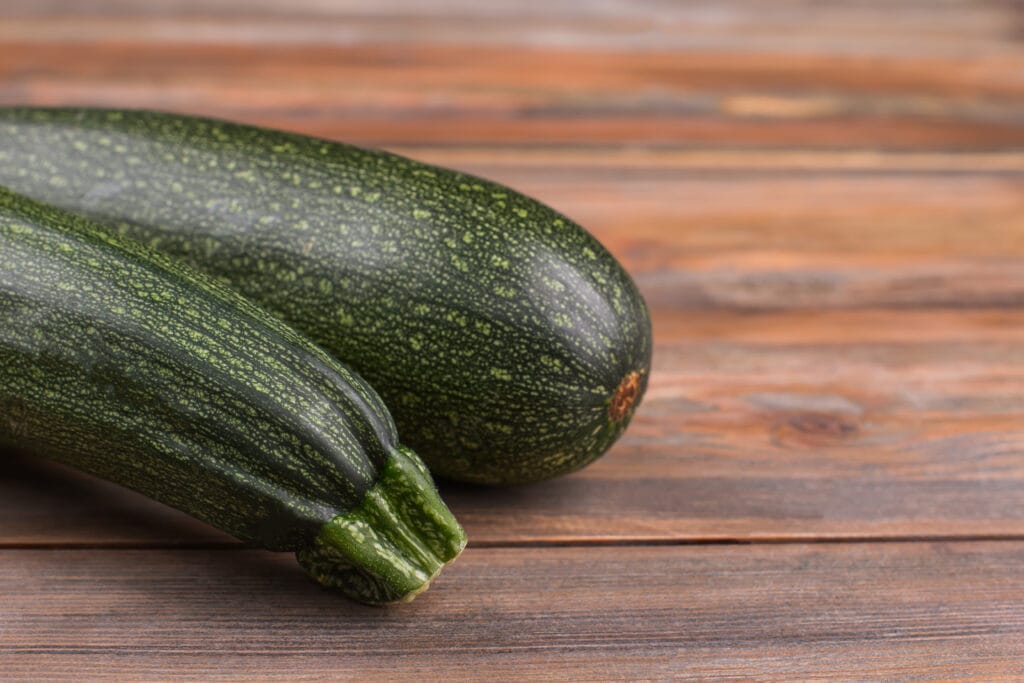
The Black Beauty Zucchini is also known as the Green Zucchini and is the most grown type of Zucchini in North America.
This type of Zucchini is considered a heirloom vegetable, is open pollinated, and takes 110 to bare a vegetable.
This is perfect for small gardens, large gardens, and even in pots.
The vegetable is glossy green, has a long harvest season, and should be picked when it grows 7 to 8 inches long.
Not only this, but it can be used in the widest range of dishes for dinner and lunch.
B) Raven Zucchini
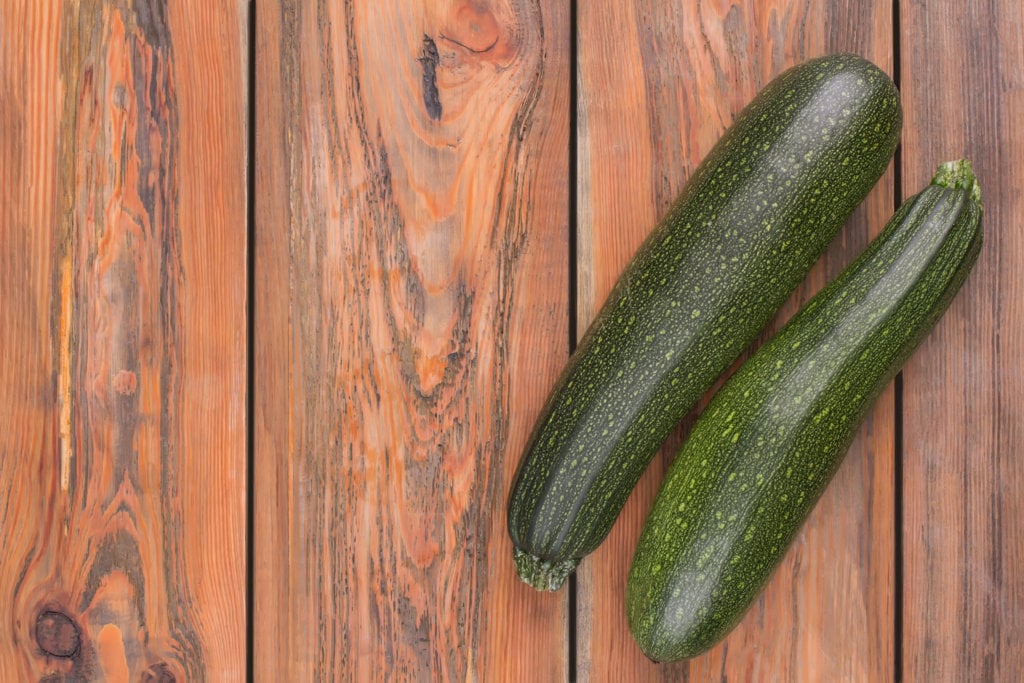
Raven Zucchini is a Hybrid vegetable that produces zucchini in an incredible speed of 48 days!
This type of zucchini produces a deep green vegetable that is loaded with antitoxidants and vitamins.
This is a compact bush plant that produces only 2 to 3 small zucchini a week at its peak. You should plant this in pots and small gardens.
Skin is tender, has incredible flavor and smooth texture. You can again have this type of zucchini is many dishes.
C) Eight Ball Zucchini
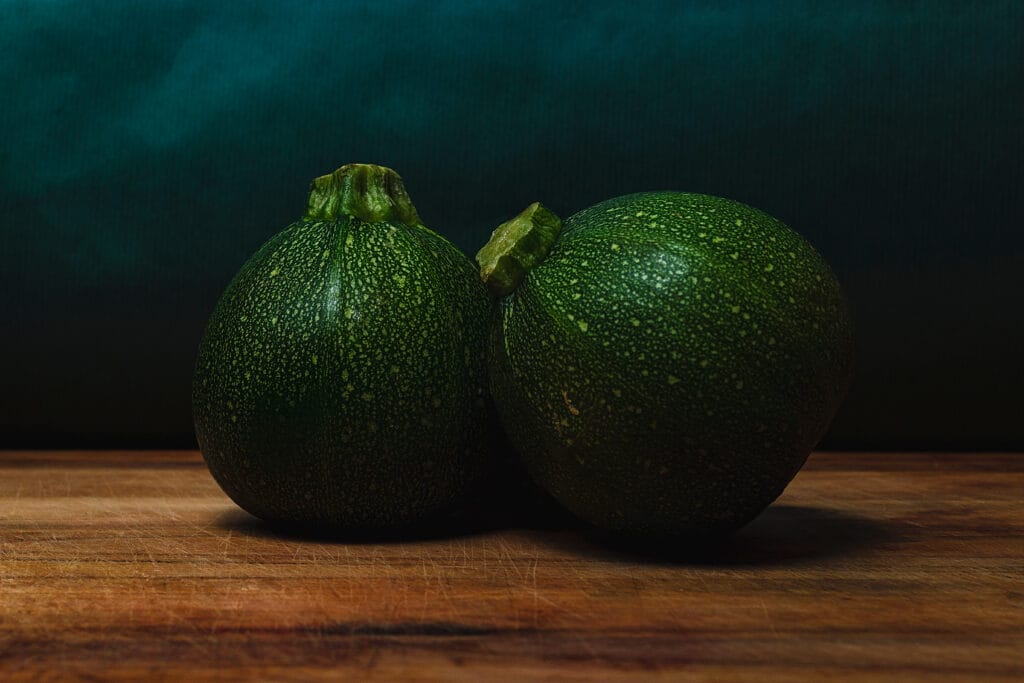
Eight Ball Zucchini is an heirloom, open-pollinated vegetable that is ready for harvest in 45 days.
This type of Zucchini produces small, round, dark-green vegetable.
It should be harvested when it reaches 4 inches in diameter for the best flavor.
This zucchini grows on a small, bushy plant and grows best in small gardens and large gardens.
Finally, it is great served stuffed with other vegetables, chickens, or pork.
D) Yellow Zucchini
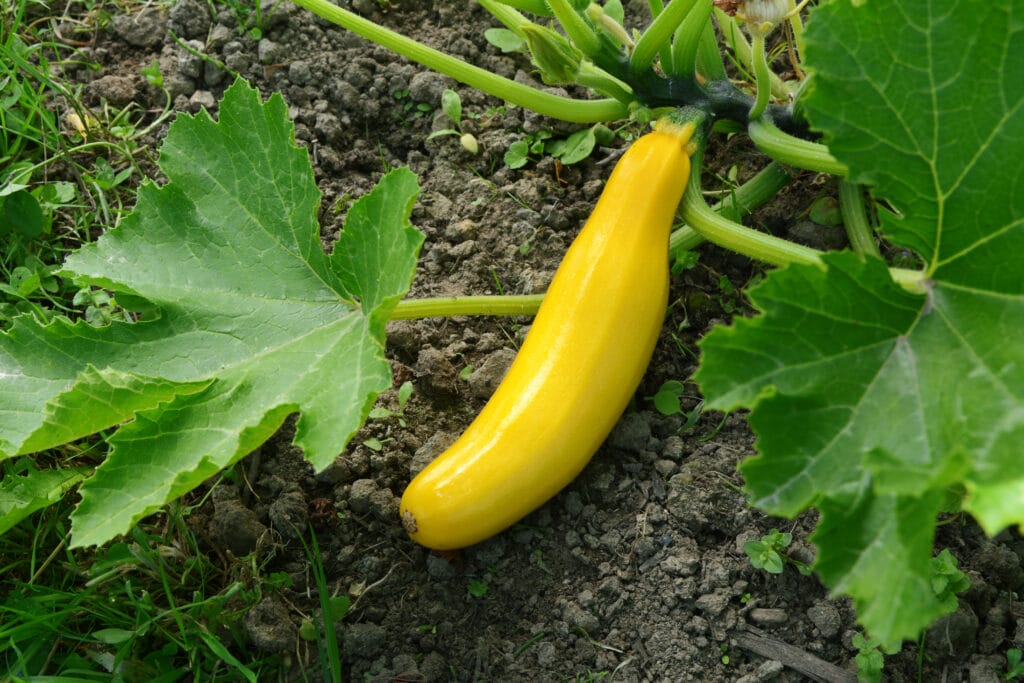
Yellow zucchini is another hybrid vegetable that is harvested in 55 days making it perfect for long-summer gardens.
This type of zucchini produces bright yellow and orange vegetables.
What sets this type of zucchini apart from others is that it produces medium size vegetables from a plant that is open and bushy making it incredibly easy to harvest.
Not only this, but it is perfect for beginners as it disease resistant and produces vegetables all summer long.
Tip #2 Starting Seeds Indoors

When learning how to grow zucchini you should always start indoors. This will help minimize the risk of weather, pests, and disease.
Step 1 – Begin Planting Seed 10-12 weeks Before the Last Frost

You will want to start your seeds inside approximately 10-12 weeks before you plan on moving your zucchini into your garden or moving your planter outside.
- You will first want to start by buying your seed. I recommend buying from Amazon because it is quick and inexpensive.
- You will then want to take 3-inch GrowKo Peat Pots and fill them up to approximately 80% full with Miracle-Gro Potting Mix.
- Next, spray your soil 5 to 8 times with a spray bottle. You will want the soil to be moist, not damp. Damp soil can cause unwanted fungus
*Find Your Last Frost Date HERE*
Step 2 – Plant 2 to 3 Seeds Per Pot

- Sprinkle 2 seeds per pot about 1/4 inch deep and then gently brush the soil over the seeds. *Note, do not to bury the seeds.
- Then spray the soil again 5 to 8 times until it turns a dark color.
The video below also gives a great tutorial on how to plant seeds.
Step 3 – Provide Your Seeds with At Least 8 Hours of Sunlight

- After planting your seeds, provide at least 8 hours of sunlight by placing the pots by a window or a Grow Light if your windows do not receive enough sunlight.
*If you put your seeds closer than 4 inches they will burn and die. If you put them further away than 4 inches there is a chance they won’t get enough sun to germinate.*
You will also want to keep the room temperature between 70 degrees Fahrenheit
- This is the temperature needed so that your seeds can turn into plants.
If you don’t have an area that will stay consistently around 70 degrees, I would recommend investing in a Plant Heating Mat.
- A Plant Heating Mat is the perfect way to keep your pots and seeds at a consistent temperature that we may not otherwise be able to.
Step 4 – Spray, Spray, Spray
After your initial planting, you will need to spray the soil once to twice a day for approximately 14 days.
It will take approximately 14 days for your seeds to germinate or “pop” through the soil.
Once your seeds have germinated and sprouted through the soil, you will want to continue to spray them twice a day for 2 more months until they are about 3 inches tall. This may take an additional 10 days.
Step 5 – Prune & Transplant your Zucchini Plant into a Larger Pot

Once your zucchini reach about 3 inches tall you can remove the smaller of the two plants.
You can do this by taking scissors and snipping the smaller of the two plants right at the soil line. This will allow the healthier zucchini plant to grow to its full potential.
Next, you can transplant your zucchini plant to a 5 Gallon Nursery Pot.
Again, you will want to fill these pots about 80% full with your potting mix.
Next, you will want to make a hole approximately 3 inches deep (about the size of your zucchini plant at this point).
Then turn your existing small pot upside down, pinch the bottom of it, and then gently pull the soil and your plant out.
You will then place it in your 5-gallon pot and fill it with soil.
Immediately after you do this, spray the soil about 5 to 10 times.
You will then want to leave your zucchini in this pot until it is ready to transplant outside.
Step 6 – Introduce your Zucchini to Outside Weather
This next step is what most beginner gardeners miss, but is critical to your success.
For about two weeks, you will want to slowly introduce your Zucchini to outside.
On the first day, you will want to place your Zucchini (still in its pot) outside in direct sunlight for approximately 2 hours.
Each day thereafter, place the Zucchini outside for an additional hour until you build up to 6 straight hours.
Tip #3: Transplant Your Zucchini Outside
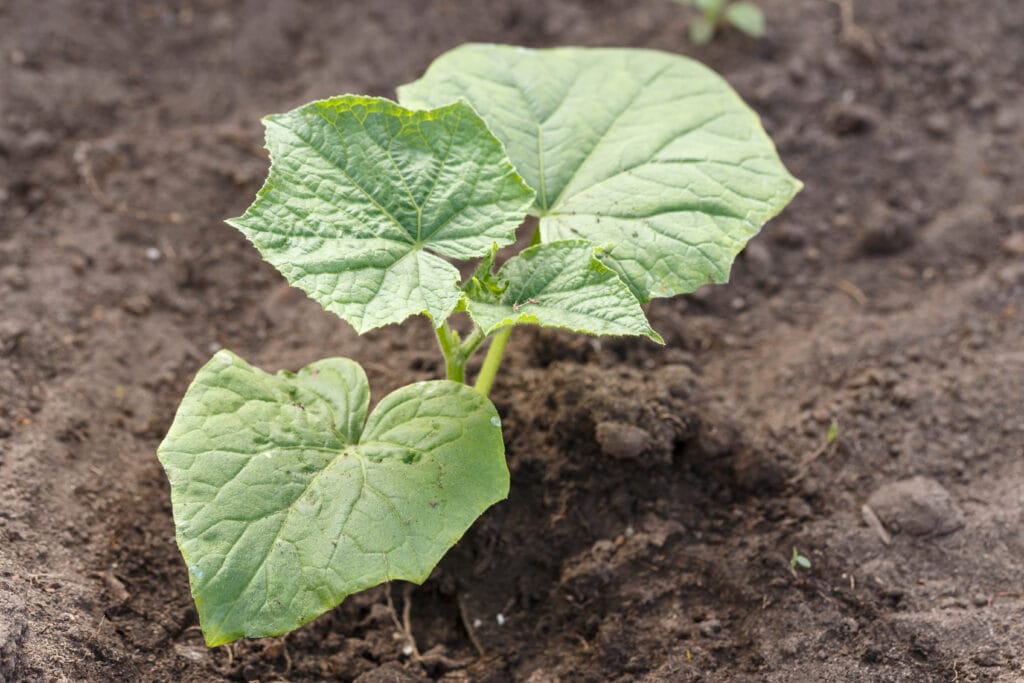
Once the last frost of the year has happened you can transplant your Zucchini outside. Never do it before because you risk your plant quickly dying.
Below, is a 2 step process for transplanting your Zucchini outside into your garden.
Step 1 – Do THIS if you will be keeping your Zucchini in its container all summer!
If you decide to keep your Zucchini in the pots then there is no need to transplant. You will only need to apply compost or Miracle-Gro Potting Mix
- Apply approximately 1/4 inch of potting mix to your planter
- As soon as you apply your fertilizer make sure to water the Zucchini for approximately 15 to 30 seconds
- Every week until harvest water your Zucchini twice a day and keep it in full sun to promote fruit growth.
If you want to learn more about growing Zucchini in containers, I recommend watching the below video:
Step 2 – Do THIS to Transplant your Zucchini into your Garden!
- After the last frost, build a 4 to 6-inch mound that receives at least 8 hours of light.
- Keep plants 2 to 3 feet apart from each other
- Immediately after you transplant your zucchini outside
- Add Miracle-Gro Plant Food and water the soil for about 30 seconds.
- Finally, water your zucchini once a day for about 30 seconds. Continue doing this until you harvest your squash mid-summer
- Related To: Best Garden Hoses
Tip #4 Effectively Care for your Zucchini THIS Way!
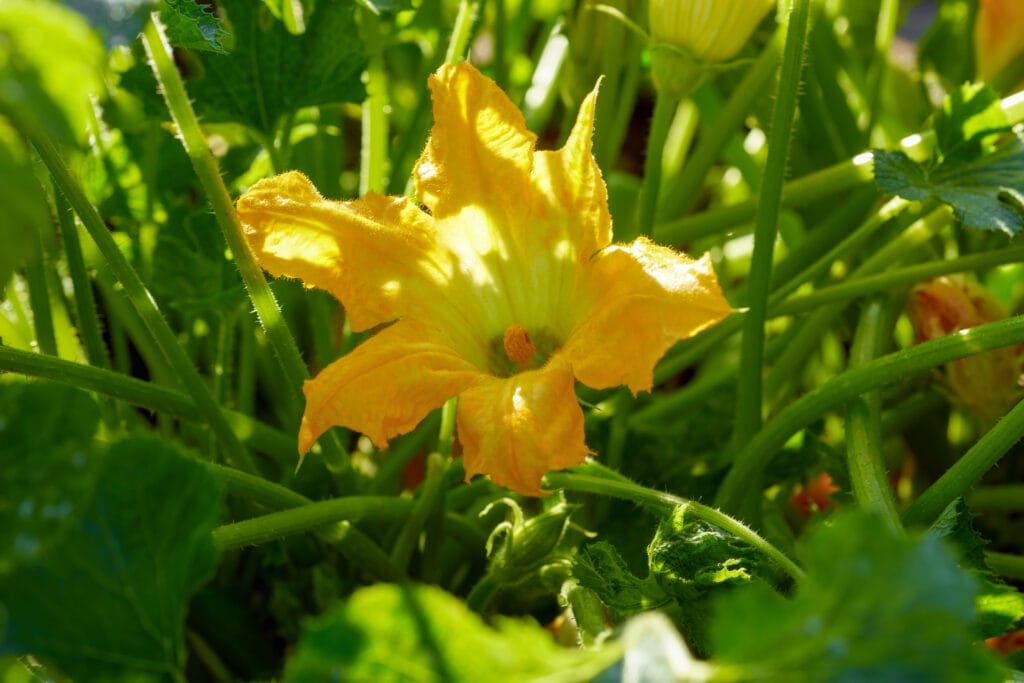
Below are caring tips for your Zucchini throughout the summer:
- Keep Your Soil Healthy – Quickly inspect your soil for fungus, harmful worms, and weeds before you plant and throughout the summer. Remove and replace it with new soil as needed.
- Mulch – Mulch around your plants with compost at the beginning of the year to prevent the possible spread of fungus.
- Water the soil, not the plants. By watering leaves, you increase the risk of spreading fungus and other diseases.
- Remove diseased and dead plants. This is the easiest way to prevent the spread of deadly diseases. If you notice yellow spots on leaves it means you may have blight fungus and will want to remove the leaves.
- Plant your zucchini at a new spot yearly. This is key to preventing seasonal diseases and insects from attacking the same plants year in and year out.
- Prevent Insects. The best way to prevent them is through an insecticide. If you don’t want spider mites, stinkbugs, or Japanese beetles ruining all your hard work I recommend purchasing Sevin Bug Killer.
Tip #5 Effectively Harvest Zucchini THIS Way!
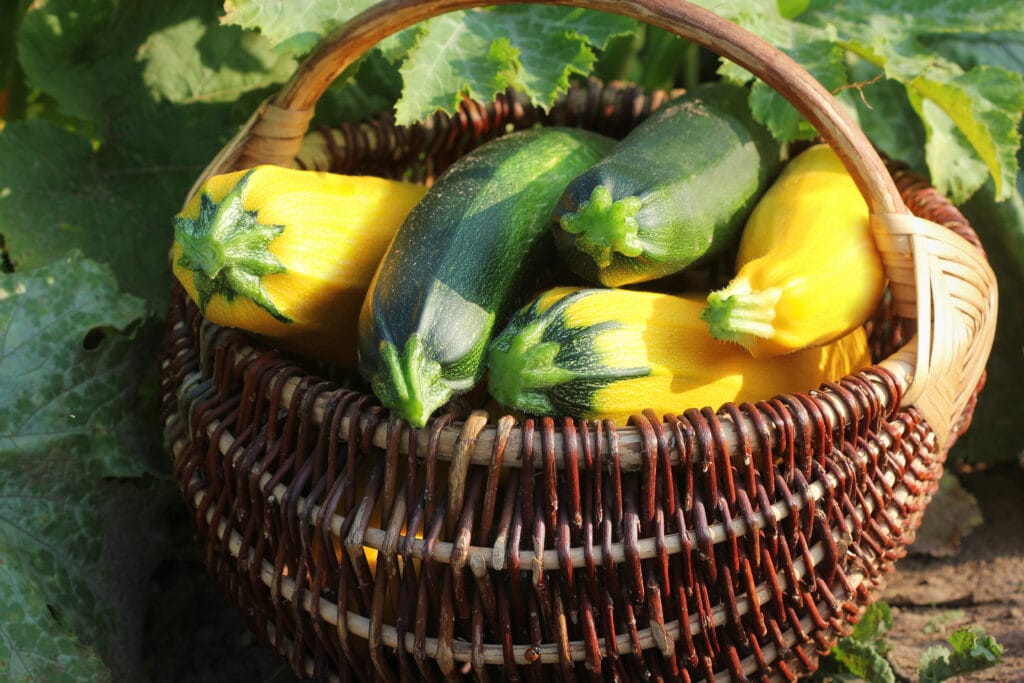
Below are several tips to remember when harvesting zucchini:
- Harvest your zucchini 6 to 8 weeks after planting. The quicker you harvest your squash the more will grow.
- Leave your zucchini on the vine as long as possible. This will allow them to ripen the most effective way and retain their flavor.
- You will want to pick your zucchini when the whole vegetable is solid green and slightly firm. Firmly hold the vegetable as the stem with one hand and the stem with another. Twist the zucchini and gently pull away from the plant.
- If insects are eating your zucchini before they fully ripen it is okay to pick them when they are light green or yellow color and place on your windowsill.
Frequently Asked Questions (6 Questions)
1. What are the best ways to store zucchini?
Below, will give you several guidelines depending on the type of zucchini:
- You can store your zucchini fresh for two weeks on the counter if you keep the vegetable whole.
- After harvesting your squash you can keep them whole for 2 to 4 weeks in the refrigerator
- After cutting your zucchini you can keep it in the refrigerator for about a week if you add a little water to it.
- If you want your zucchini to last for a year then you will want to shred them and freeze them.
2. What are the Best Uses for Zucchini?
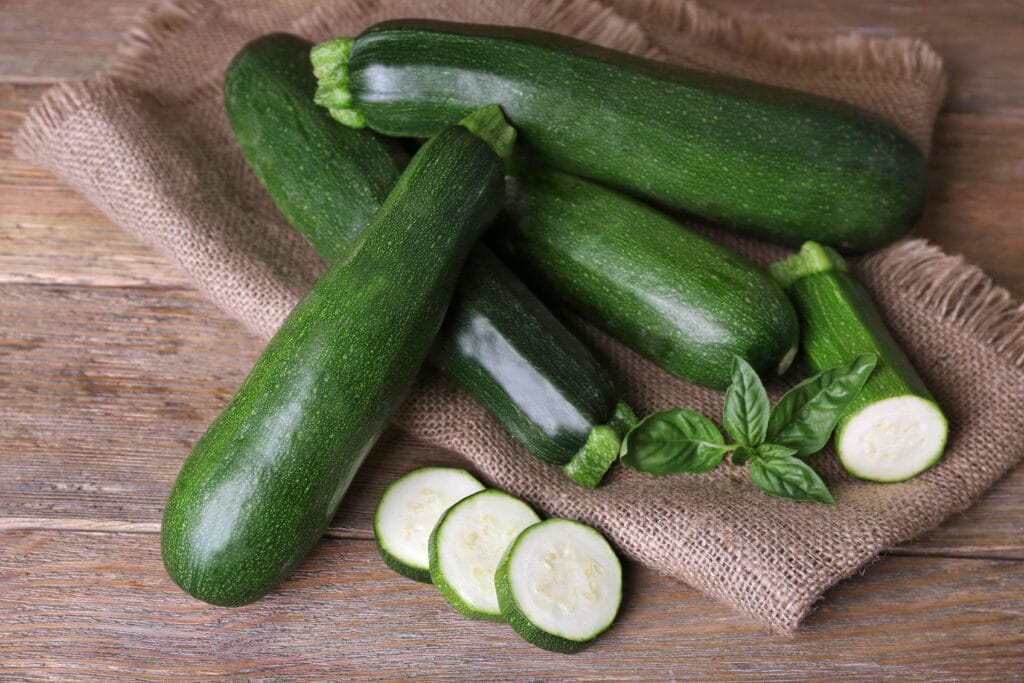
There are numerous uses for zucchini in food. Below, are some of the best ways to use zucchini:
- Stir Fry
- Zucchini Salad
- Salad
- Chicken & Fish dishes
- Vegetable sandwiches
- Related: 25 Ways to Use Zucchini
3. Should I Stake my Zucchini?
You should stake your zucchini if you live in an urban area where space is limited, if you want to try vertical gardening, or if you want to conserve space in your garden for other plants.
I recommend purchasing Dura-Trel Trellis.
This Trellis comes fully assembled, is incredibly durable, is large enough for even the largest of plants, and is beautiful enough that it can fit in any setting.
If you want to learn how to grow Zucchini on a trellis then I recommend watching the below video:
4. What type of Zucchini Seeds should I Use?
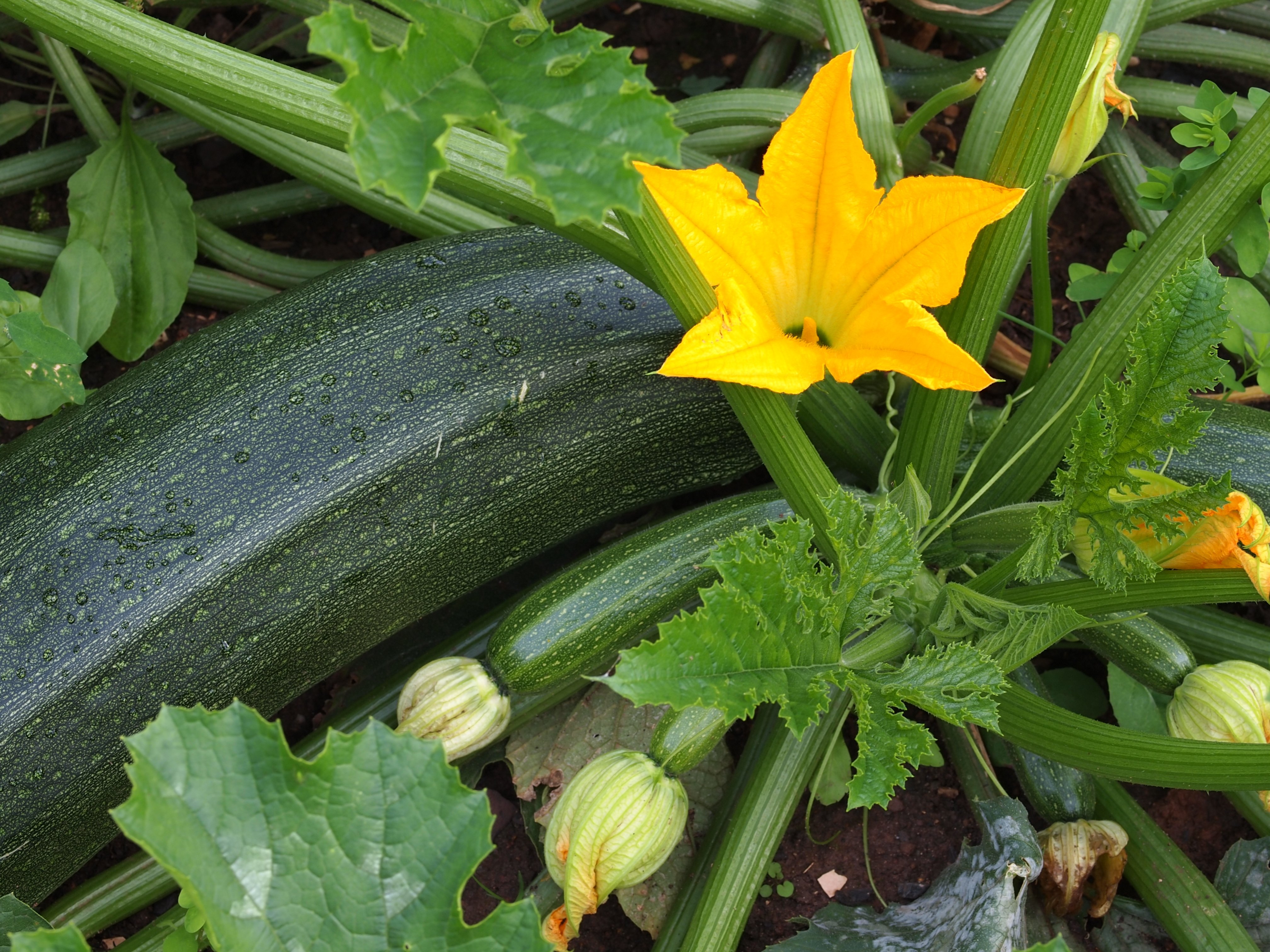
There are four types of seeds that can be used to grow zucchini; heirloom, organic, hybrid, and GMO.
I recommend using Heirloom or Hybrid seeds. Gardeners do not have access to GMO seeds and organic seeds is a marketing term and not truly a type of seed.
A. Heirloom
- These seeds contain all the zucchini’s original traits and produce some of the most beautiful and best-tasting zucchini out there.
- The downside of this seed is that it is the costliest (due to its rarity).
- In addition, expect the least amount of yield from this type of seed due to susception of disease and other elements.
B. Hybrid
- Hybrid seeds were made from combining the genes of the same group of plants. This is not a bad thing.
- This type of seed is what most gardeners use when learning how to grow zucchini from seed.
- The goal with hybrids is to produce a plant that contains the best features of both parent plants.
- This seed is critical if you want the most resistant plant against mother nature’s elements, insects, and diseases or want the most yield!
5. What Type of Fertilizer Should I Use for My Zucchini?
The best type of fertilizer for zucchini is compost.
- Related: Ultimate Composting Guide: What to Compost
- Related: Yimby Tumbler Composter: 5 Reasons to Buy Today
And if you don’t have the time or ability to create compost then I recommend buying Miracle-Gro Plant Food for your zucchini.
- What I like about this product is that you only have to apply it once every 3 months and it contains natural ingredients and micronutrients that support root strength and plant development.
6. What Type of Soil Should I Use for My Zucchini Plants?
If you will be keeping your zucchini plants in containers all year then you will want a well-draining potting mix that provides the correct amount of nutrients like Miracle-Gro Potting Mix.
If you will be planting your zucchini into a garden then you will want to add a nutritious garden soil mix into the ground, such as Miracle-Gro Expand N Gro